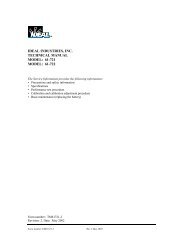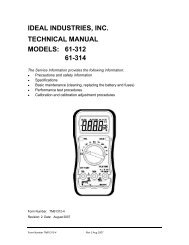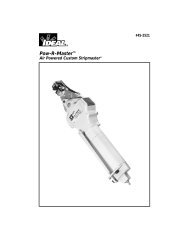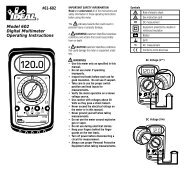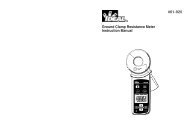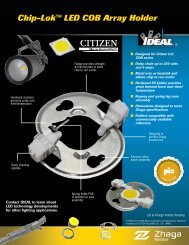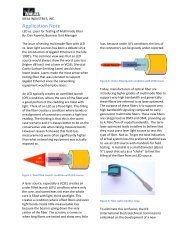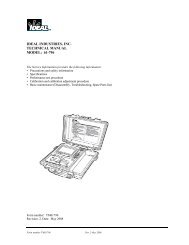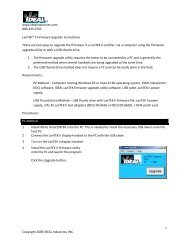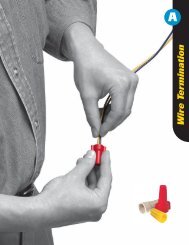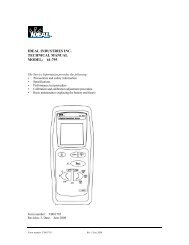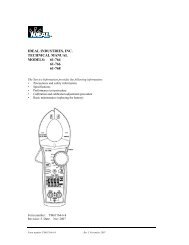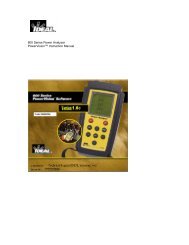LanTEK® II Series Manual - Ideal Industries Inc.
LanTEK® II Series Manual - Ideal Industries Inc.
LanTEK® II Series Manual - Ideal Industries Inc.
Create successful ePaper yourself
Turn your PDF publications into a flip-book with our unique Google optimized e-Paper software.
Chapter 6<br />
Structured cabling testing<br />
6.14.1. Delay and Skew Test Error<br />
The delay and skew measurements usually result in slightly different values for the individual<br />
wire pairs of a cable. However, a large difference indicates a cable fault or a damaged wire<br />
pair.<br />
6.15. Capacitance Test<br />
This test determines the mutual capacitance between the two conductors of each wire pair, to<br />
ensure that the capacitance of the corresponding cable type has not been impaired by the<br />
installation.<br />
‣ The capacitance test of the analysis mode indicates the overall capacitance in Nanofarad<br />
(nF).<br />
‣ The Autotest measures the overall capacitance in Picofarad (pF) per meter or foot.<br />
6.15.1. Capacitance Test Error<br />
Illustration 6.15. Capacitance Test<br />
The higher the capacitance, the higher the error rate. Due to transport and installation of the<br />
cable, minor changes in capacitance are normal. Connectors and patch cords also influence<br />
capacitance values.<br />
6.16. ACR-N (ACR) Test and Power Sum ACR-N (Power Sum ACR) Test<br />
The ACR-N (ACR) test determines the loss-crosstalk distance by means of a mathematical<br />
comparison (difference calculation) of the loss and NEXT test results. The differences between<br />
the measuring values of a wire pair indicate whether transmission interferences are likely to<br />
occur in the respective wire pair.<br />
The ACR-N (ACR) measurement is calculated from pair to pair. Power Sum ACR-N (Power<br />
Sum ACR) measurement is calculated by summation of NEXT values between a selected wire<br />
pair and three other wire pairs of the same cable.<br />
66



